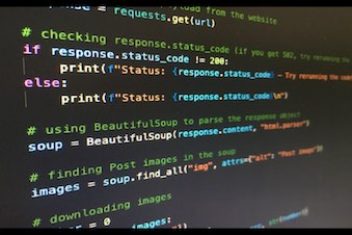When we imagine cybersecurity threats, many of us have a vision of a 1980s-looking computer hacker in a barely lit room who’s constantly tapping on the keyboard in a completely randomized manner, all the while a small progress bar continues to fill upon the screen. Unfortunately, the reality is somewhat different. Modern cyber threats are very diverse in their nature, and often the only thing in common they all have is the negative impact on the operation of your business.
Even though they vary in details, such as implementation or the end goals, some of these cyberattack types are more often performed than others. To help you identify the biggest risks to your electronic defenses, below, you will find a list of the most prevalent cybersecurity offenders that your business might have the displeasure of encountering, including phishing, ransomware attacks, insider-caused data breaches, malware, and even rarely changed and overused passwords. Explore the info below and use the knowledge provided to better prepare your computer systems for such eventualities, no matter whether it is workflow automation in HPC or a strategic data center!
Read: Data Breach Protection: Developing a Robust eCommerce Security Strategy
Phishing
Phishing is defined as the act of sending emails to a large group of people in an attempt to acquire sensitive information such as usernames, passwords, and credit card details. The recipients of the emails often have no idea that they contain malicious content and might think that they are legitimate and come from a trustworthy source. Since phishing emails are sent to numerous users at once, they often have very short content. Small businesses must have credit monitoring services to detect and defend themselves from digital threats.
They usually impersonate some sort of a service or a company that the targeted victim might be familiar with. In addition, these emails usually contain a link to a website or an email address that is identical to the one used by the specific organization that the email is pretending to be, but the information on the page or in the email is fake or outdated. The purpose of phishing is to steal personal or sensitive information.
Ransomware
Ransomware is a type of malware that locks a device, usually a computer or a mobile device, and prevents users from accessing it until they pay a ransom to the attacker. Such malware is often distributed digitally, but some other techniques are also used to spread it.
The amount of money demanded varies. In some cases, it’s only a few dollars, but in other instances, it can be tens of thousands. The most common way to infect computers with ransomware is through malicious attachments that users might click on without knowing what they do. Another popular method for infecting computers is through spam campaigns.
Read: Is Your Company Ready for a Ransomware Attack
Insider-Caused Data Breach
Usually, an insider-caused data breach is caused by a cybercriminal who is a member of your staff or simply a former employee with access to your systems. Such an attack can come in many forms, including violating the terms of use, unauthorized access, negligence, or theft.
Such a data breach can be devastating to your business as it exposes your sensitive information to the public. This can have great reputational damage and can even lead to bankruptcy in extreme cases. To minimize the risk of such an event happening to you, you should make sure that all members of your staff are aware of the dangers of cybercrime and new security threats.
Read: Skills that You Need To Become A Cyber Security Expert
Malware
Malware is a generic term for all types of malicious software that has been created by hackers with the intention of exploiting users’ computers or mobile devices and stealing their information without their knowledge. There are two main categories that malware falls into viruses and worms. Both viruses and worms are programs that replicate themselves by attaching copies to other files.
Today, we mostly deal with Trojan horses – malicious applications that appear to be a legitimate software but are actually designed to steal your personal information. A trojan horse is disguised as a benign program, but once it gets inside your computer or mobile device, it installs additional software onto your device without your consent.
Read: How to Protect Your Site from Malware
Overused Usernames and Passwords
While this might not seem like an actual cybersecurity threat at first glance, using the same username and password for multiple accounts is one of the most common mistakes that users make when protecting their computer systems.
Cybercriminals often try to find out which login credentials are commonly used by injecting spyware into websites that people visit. Once they get their hands on the data obtained from such attacks, they use it to gain access to people’s online accounts as well as their bank accounts or credit cards. If you use the same username and password for several websites, you might be putting yourself at risk of having all your online accounts hacked! Always choose different passwords for each account you create, and remember to change all of them on a regular basis.
Read: Why Do Hackers Often Choose to Attack the Health Sector
Conclusion
We hope that this article has given you a better insight into the world of cybersecurity threats. Now that you know what the most common dangers look like, you need to take action and improve your cybersecurity using all means available. If you do so, you will be able to minimize your risk of such attacks and keep your sensitive information out of the hands of cybercriminals! Good luck!
If you like the content, we would appreciate your support by buying us a coffee. Thank you so much for your visit and support.



